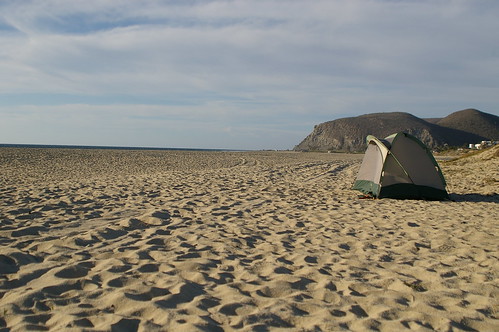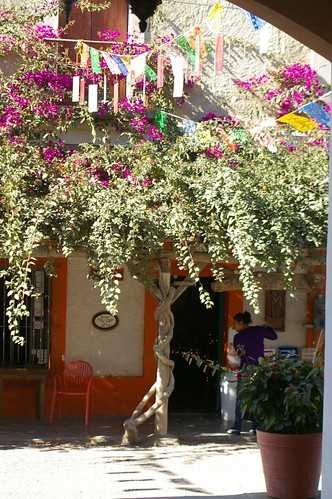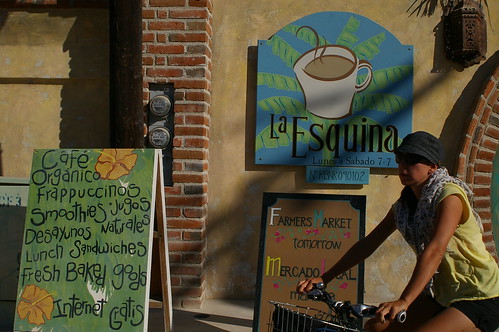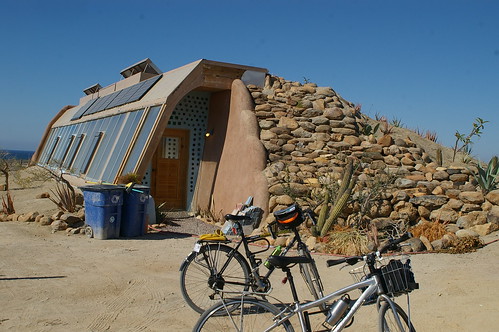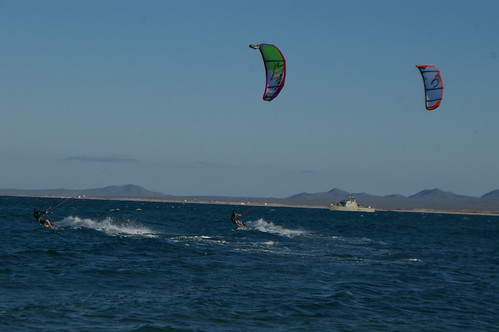After dancing on the beach on New Year's eve we left the next morning for a 24 hour bus ride north.
In the past I have tended to be overly optimistic about bus rides thinking that I would be able to read several full length novels and complete hours of work on my laptop during the trip. Usually I am disappointed and I find that I can only do small spurts of reading and typing as the bus sways back and forth on windy roads. We were both dreading the long ride. But it turned out not to be so bad. We were able to get some sleep and even do some reading.
We stopped in Ensenada where we had time to try Mexican Chinese food and watch a Spanish subtitled version of the "Social Network." After spending the night there we hopped another bus to the border at Tijuana.
The bus dropped us at the end of long line to cross the border so we did not get to experience much of Tijuana. The special bike lane that we had read about did not seem to be open anymore. So we joined the pedestrian line. And found that it was not well equipped to handle touring cyclists (note to others - stay in the left most line to avoid the turnstiles). After that we boarded a San Diego tram line to head downtown.
The next morning we boarded an Amtrak train to continue our trip north. Our trip was meant to be a
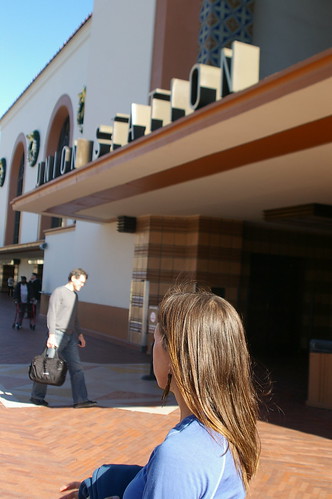 n "experiment in low ghg travel" so we were using buses and trains to head north instead of flying. Train travel creates about .21 kg of ghg emissions per passenger mile compared to .35 kg for SOV cars and .48 for airlines. Train travel is also better for pollution from Oxides of Nitrogen, VOCs and Carbon Monoxide.
n "experiment in low ghg travel" so we were using buses and trains to head north instead of flying. Train travel creates about .21 kg of ghg emissions per passenger mile compared to .35 kg for SOV cars and .48 for airlines. Train travel is also better for pollution from Oxides of Nitrogen, VOCs and Carbon Monoxide.When we first boarded the train we both thought "this is civilized." It definitely felt more comfortable than the bus. We rode a double-decker train to LA where we had a brief layover before embarking on another train. For the first several hours the train followed a similar route to the one we had cycled about two months before. It was fun to see the roads we cycled and campgrounds we had stayed at again.
The next morning we watched the sun rise over a snowy landscape near Mount Shasta in Northern California. A definite contrast to the beaches we had been on only a few days before.
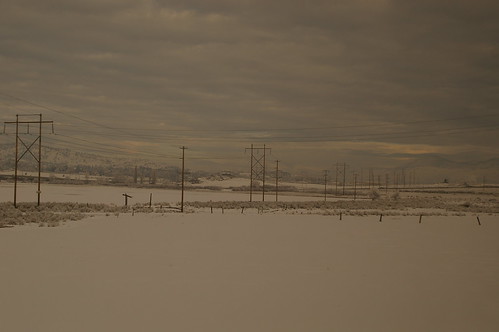
The train was quite comfortable. There was plenty of legroom, outlets to plug the laptop computer into, a lounge car with big glass windows, a snack bar and a dining car. There were also sleeper cars but we had opted for the cheaper seats. Rather than spend two nights on the train we chose to spend a night in Eugene, Oregon.
From Eugene we took a combination of train and Amtrak buses back to Vancouver.


